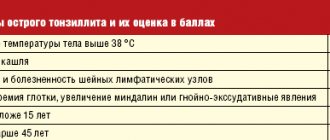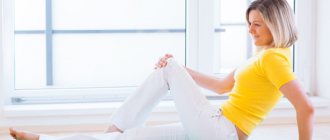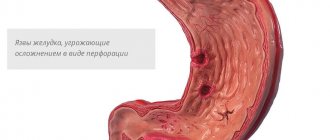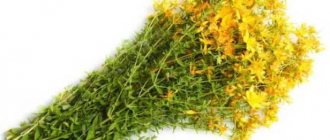Gastritis is a disease when the functioning of the gastric mucosa is impaired, preventing many people from living a full life. Eternal stress, poor diet, alcohol and cigarettes become the cause of disease for every person on earth. Mostly people lead an inactive lifestyle, affecting the body irreversibly.
Many people believe that all diseases, including gastritis, can be treated exclusively with pills and diets. Therapeutic exercises for gastritis greatly help restore strength and put the digestive organs in order.
Why do you need exercise for gastritis?
Gastritis causes unpleasant pain in the stomach, which greatly changes the joys of life into frustration. Many types of gastritis can be cured with medications and diets, but the advantage of exercise therapy for gastritis is that the effectiveness of treatment will increase, and the number of pills taken will be significantly reduced. The liver becomes unloaded. If a person has gastritis and wants to exercise, it is useful to familiarize yourself with the course of exercises and the intricacies of implementation.
What exercises are suitable for gastritis?
First, you need to undergo examinations and find out the type of gastritis of the patient. Heavy exercise when suffering from any form of gastritis is harmful. Improper physical activity inhibits the direct duties of the stomach, leading to improper digestion. If the regime is built correctly, it will be possible to eliminate problems in the body with the help of gymnastics.
Gymnastics for gastritis will help restore the digestive system, improve blood circulation in the walls of the stomach and strengthen the abdominal muscles.
How does exercise therapy help?
In order not to cause harm when doing physical exercise, it is better to find out the cause and type of your own illness. Based on the diagnosis, certain exercise therapy sessions are prescribed to cope with pathological processes. The exercises will give a greater effect and will not become a new cause for another disease due to diligence or improper execution of the exercises.
How does the body respond to exercise therapy? When performing exercise movements, the abdominal muscles contract, massaging the abdominal organs. If the exercises are performed correctly, the performance of organs improves. This is especially true for the work of organs with impaired peristalsis. During physical activity, food and feces begin to move in the intended direction. Physical education helps improve the nervous, cardiovascular and respiratory systems, leading to the recovery of the gastrointestinal tract.
Exercise therapy for low and high acidity
Physical exercises for gastritis and the load on the body depend on the disease. If acidity is increased and exercise is performed for too long, there is a tendency for gastric juice to decrease.
Gastritis with low acidity requires low physical activity with average energy, it is advisable to repeat the exercises infrequently. Slowly but steadily, blood flow to the walls of the stomach increases. Classes last no longer than half an hour. Better in a group with musical accompaniment. A joyful and energetic environment will affect the body as a whole. Basic exercises include abdominal strengthening and breathing training. It is worth adhering to the rules: you need to exercise one and a half or two hours before or after meals, drink after exercise 30 minutes later.
If gastritis is with high acidity, do the exercises slowly and monotonously, but more complex. The exercise activity gradually increases. The classes necessarily include breathing and relaxation exercises. The exercises are often repeated, physical exercise on the abdominal muscles is practically not used, for fear of stomach pain. If pain occurs, you should absolutely not exercise.
Movement is life!
Sports are different. Of course, heavy loads with gastritis are harmful. They can even lead to the development of chronic gastritis, especially if combined with poor diet. After all, irrational physical activity inhibits the motor functions of the stomach, and overwork and overload lead to secretory failure of the organ. But reasonable exercise, on the contrary, is an excellent way to cope with digestive problems. Therapeutic exercises for gastritis help restore the neurohumoral regulation of digestion, normalize the secretory and motor functions of the stomach, improve blood circulation in the abdominal cavity and strengthen the abdominal muscles.
During intense muscle work, metabolism, energy and oxygen in cells accelerates. Thanks to this, damaged cells are actively replaced by new ones, which not only promotes faster recovery, but also reduces the risk of gastritis becoming chronic. Therefore, if you have gastritis, you should not lie on your sides. We need to get up and start working.
Article on the topic
Best friends of the stomach. What plants will help in the treatment of gastritis?
Advice: Of course, you shouldn’t start exercising when you have an acute attack of stomach pain. As a rule, the first classes are prescribed 10 days after the onset of the disease. Start with a low load, gradually increasing the intensity. Abdominal exercises should be avoided at first.
Physical exercise for gastritis with elevated pH levels
Types of physical exercises are performed slowly; the pulse when palpated should not exceed 120 beats per minute.
- We sit on the floor, begin to clench our hands and feet, then unclench them. You need to repeat the action 10 - 40 times.
- The movement is performed while sitting. Turns the body left and right. With each turn, you need to open your arms, return to the starting position, and close them. The exercise is performed 3 – 6 times.
- We continue to sit, slowly raise our leg and lower it. Make sure your legs are straight. Do it one by one. Repeat the exercise 3 – 6 times.
- We continue to sit, legs spread as wide as possible. We bend over to the leg, reach for our toes with our hands, and rise back up. Same with the second one. Repeat 3 – 6 times.
- We sit on the floor, legs extended straight. Bend your leg at the knee, bring it closer to your chest, and slowly lower it back. We repeat the exercise with the second leg. Do 3 – 6 approaches.
- Now use your imagination and take a position as if you were sitting on a chair. This is the starting position. Squat down, then return to the starting position. Repeat the exercise 4 – 12 times.
- We sit down and relax the ankle muscles.
- Now we lie on our backs and bend our legs. We stretch forward, put our hands behind our heads. Perform the exercise 4 – 6 times.
- Turn onto your side. We take our leg back and at the same time raise our arm up. We repeat the movement from 3 to 8 times.
- We return to the back. Raise the straightened leg up and slightly to the side. We do the exercise 3 – 8 times. We change the leg.
- Get on all fours. Raise your right leg and left arm. Replace the arms and legs accordingly. Do 3 to 8 times.
- Walk in place for a maximum of 2 minutes.
- We sit down and put one hand to the chest, the other to the stomach. We breathe slowly.
Physical exercise for gastritis with low acidity
- We stand with our feet shoulder-width apart. Raise your leg back, arms up. Make sure your leg remains straight. We repeat the exercise 3 – 4 times. We change the limb.
- We're standing. We turn the body to the left, then to the right. When turning, open your arms to the sides, and when returning, close your arms. Do the exercise 3 to 4 times.
- We continue to stand. We bend left and right, 3 to 4 times.
- We're standing. We lean forward. You need to do 3 - 4 tilts.
- We're standing. We take a deep breath and hold our breath for a while. Let's exhale. Repeat 5-6 times.
- We sit on the floor. From behind we rest well on our hands. Legs extended. We bend at the lower back. We repeat the exercise 4 – 6 times.
- We sit on the floor. Raise your leg and make sure you are straight. We do the exercise 4 – 6 approaches.
- Exercise "bicycle". Completes in no more than 30 seconds.
- We stand up, inhale deeply, hold our breath and finally exhale. The exercise is repeated 5 – 6 times.
- Now we lie down on our stomach. We bend our arms. Repeat the movement 5 – 10 times.
- We stand with our feet shoulder-width apart. Let's start squatting. Do 5 – 15 times.
- We stand with our feet shoulder-width apart. Raise your leg 90 degrees. Keep it straight. Lower it. Repeat the movement 4 to 6 times with each limb.
- We sit on the floor near the wall. We rest our feet against the wall. Lean back. Repeat the exercise 4 – 5 times.
- Sitting on the floor, place one hand on your chest and the other on your stomach. Slow down your breathing.
- We get on all fours. Raise your left arm and right leg. We lower it. Repeat the exercise with the other arm and leg respectively. Perform the exercise 3 – 8 times.
- Let's get up. Jump up high. You need to do 15 – 60 small jumps.
- Time yourself for 2 minutes and perform the steps on the spot.
- Breathe deeply.
The exercises are performed in order in the specified sequence. The exercises begin slowly, and the pace increases during exercise.
Exercises for chronic gastritis
Before starting a set of exercises for chronic gastritis, you need to walk around the room for 3 to 5 minutes.
- Lie on your back, stretch your arms along your body. Touch your shoulders with your hands, open your arms. Breathe in. Then touch your shoulders again and place your arms along your body. Repeat the movement 5 – 7 times.
- We're lying on the floor. As you inhale, raise your knee to your stomach. Let's exhale. We return to the starting position. We repeat the movement 5 – 7 times with each leg.
- Lying on your back, bend your legs at the knees. Then we spread our knees and move them, returning to the starting position. We repeat the movement 10 - 12 times.
- We turn on the right side. Inhale and pull the knee of the left leg towards the stomach, and move the left arm back. We exhale and come back. Repeat the exercise 8 – 10 times. Turn on your left side and repeat the set of movements.
- We get on all fours. We take the leg back and return it. Repeat the exercise 5 – 7 times.
- We continue to stand in the previous IP. We raise our right leg and left arm and lower it. Repeat the movement with the other leg and arm respectively. Perform the exercise 5 – 7 times.
- We sit down on a chair. They wrapped their hands around her waist. We perform body turns left and right. We repeat the exercise up to 10 times.
- We continue to sit on the chair. Raising your arms in front of you, raise your leg. We do the exercise with the other leg. Repeat the exercise 5 – 7 times.
- We stand with our feet shoulder-width apart and arms out to the sides. We try to turn around to see the wall behind us. You need to make sure that your heels do not come off the floor. Inhale and return to the starting position. Repeat similarly in the other direction. The exercise is performed 5 – 7 times.
- We're standing. Feet shoulder-width apart, arms spread to the sides. We bend over and touch the toe of our left foot with our right hand. The left hand rises up at the same time. Repeat similarly with the other hand. The exercise is performed 5 – 7 times.
It is recommended to start exercising at least one and a half hours before or after meals.
Therapeutic exercises to improve bowel function
The proposed set of exercises helps with both atonic and spastic constipation. To achieve a positive effect, gymnastics should be performed regularly, gradually increasing the load: during the first month of classes, perform the exercises 3-5 times, then from 5 to 10 times. It is better to do gymnastics at the same time, on an empty stomach - for example, in the morning.
If the exercises cause discomfort (severe pain in the intestines, bloating, rapid heartbeat, nausea), then the course should be temporarily stopped and consult a doctor.
Perform the exercises slowly, combined with proper breathing, without sudden jerks. Watch your body position! Adults must show children the correct execution and control the process of gymnastics.
Contraindications for performing gymnastics are fever, ulcerative colitis, intestinal pain, diarrhea, and concomitant diseases in the acute stage.
Benefits and contraindications
Healthy running for gastritis will be beneficial; while running, the digestive functions of the organs improve. Before going for a run if you have gastritis with a high level of acidity, it is useful to drink oatmeal jelly. Thanks to the drink, the walls of the stomach are coated, a film is formed, which helps lower the acidity level. If the acidity level is low, it is acceptable to drink half a glass of water. Acid release will occur more intensely. It is also useful to go for leisurely walks after meals. Swimming, skating, skiing, and playing volleyball are allowed. Engaging in such sports develops physical abilities and improves the psychological state of the body.
A set of exercises for gastritis has contraindications. Follow the rules of execution.
Do not take part in health-improving physical exercises when an ulcer appears, especially during an exacerbation. Severe nausea and frequent vomiting are a contraindication to any type of physical exercise. If severe pain appears in the stomach area, you should not take up therapeutic exercises. If bleeding is observed or the disease occurs with stenosis, it is worth avoiding exercise therapy. You need to exercise when the digestive system is stable and there is no pain in the stomach.
During physical exercise, energy increases, the body is saturated with vitamins, and the level of acidity in the gastrointestinal tract is restored.
By the way
The stomach also benefits from health-improving running, since the vibration of internal organs during running improves the function of the digestive organs. If you have high acidity, before the start of the race it is good to drink a glass of oatmeal jelly, which envelops the mucous membrane and neutralizes excess acid. With low acidity, it is enough to drink half a glass of water - this will increase the secretion of gastric juice. Walking at a slow pace, 1.5–2 hours after eating, is also very beneficial for the stomach. Swimming, skating and skiing, as well as outdoor sports games with a ball (volleyball, football) give a good effect. They provide not only good physical activity, but also improve your psycho-emotional state.










